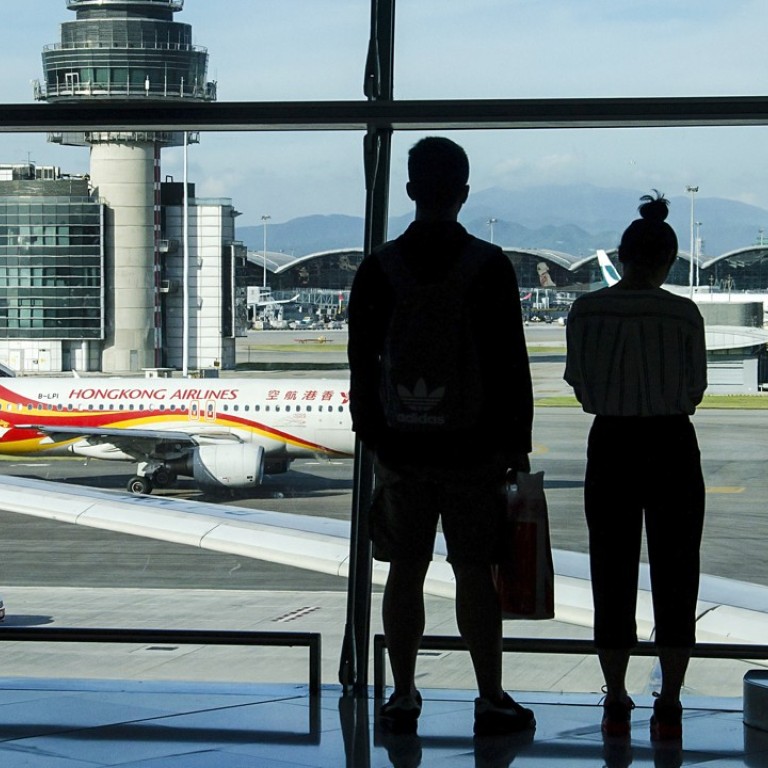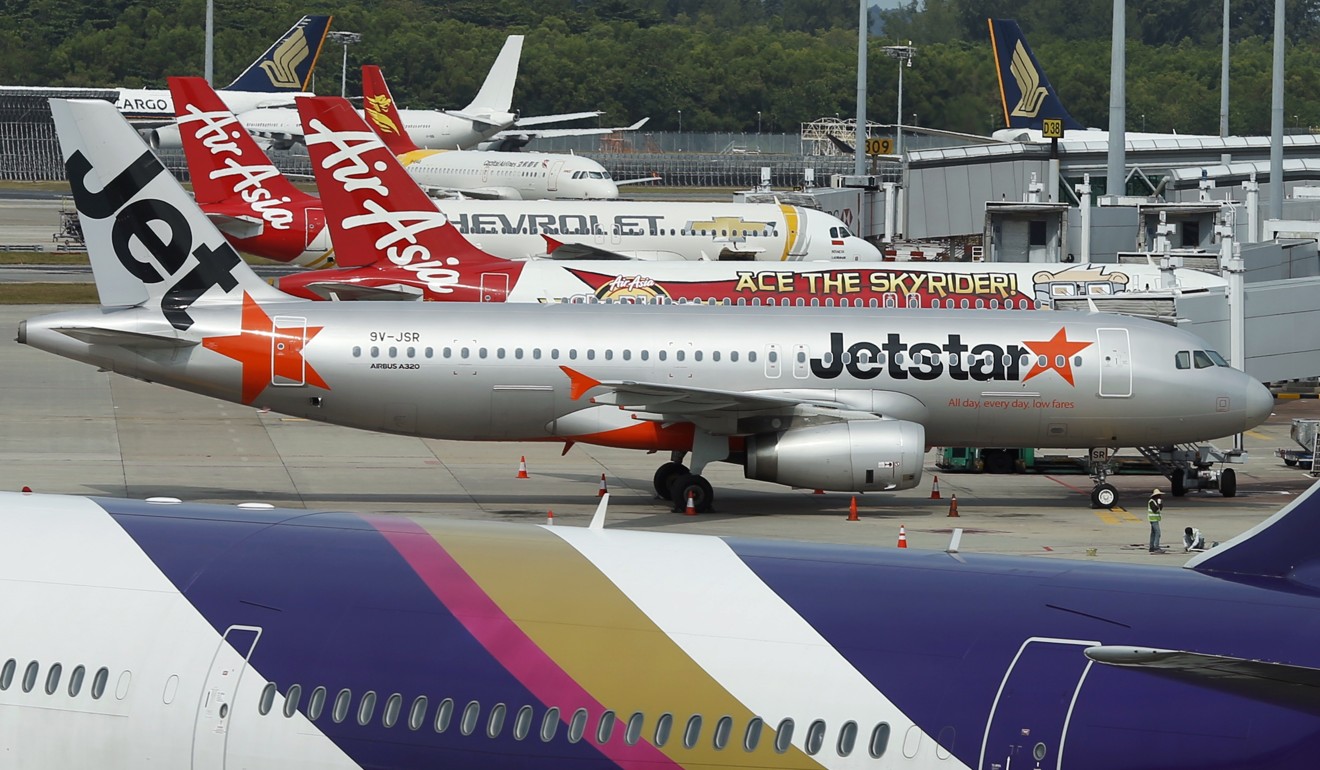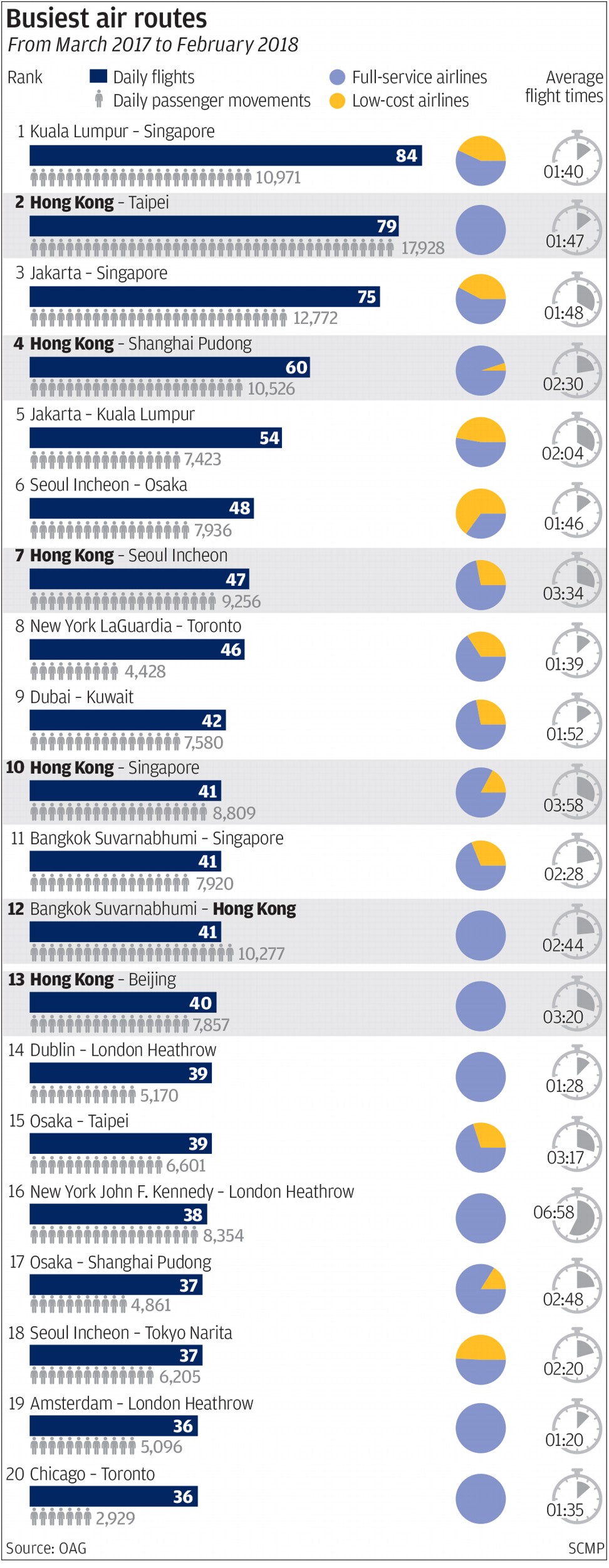
Hong Kong dominates busiest air routes in the world – but budget airlines can’t get a look-in
Booming low-cost sector helped budget carriers such as Air Asia and Jetstar become dominant players in the region but the trend has had little impact on key routes in and out of the city
Hong Kong has some of the busiest air routes in the world, a report has found – just don’t expect to get a budget flight to or from the city, unlike elsewhere in the region where low-cost travel is booming.
The low-cost sector, the fastest-growing area of air travel, helped the likes of budget airlines Air Asia and Jetstar to become dominant players in the region compared with traditional full-service airlines, but the trend has had little impact on key routes in and out of HKIA. The report, produced by air travel data firm OAG, measured flights between March 2017 and February this year.

Data from industry trade group the International Air Transport Association showed the share of seats offered by budget carriers versus full-service airlines in Southeast Asia hit 52.6 per cent in 2016. In East Asia the number was just 8.4 per cent.
Free showers, faster Wi-fi and revamped boarding gates at Hong Kong airport, but upgrades may be too little, too late
Hong Kong only established a permanent home-grown low-cost carrier in 2013, in Hong Kong Express, after the failure of Oasis Hong Kong Airlines in 2008. A bid to launch by Jetstar Hong Kong in 2015 was firmly rejected by the authorities, leaving the city one of the last major Asian cities to not have a diversity of airlines offering flights at a range of price points.
Low-cost carriers made up just 10 per cent of flights out of Hong Kong, whereas the figure rose to a third in Singapore and 40 per cent in Jakarta. In its report, OAG noted the “the relatively high ratio of low-cost carriers on some of the busiest Asian routes” minus Hong Kong.
Low-cost carriers helped lift routes into the top 20 including Jakarta-Singapore (42 per cent of flights), Jakarta-Kuala Lumpur (47 per cent), Seoul Incheon-Osaka Kansai (65 per cent) and Seoul Incheon-Tokyo Narita (49 per cent).

A one-hour flight between Kuala Lumpur and Singapore flown 84 times a day in the past 12 months became the world’s busiest international route, toppling the 79 trips between Hong Kong and Taipei.
The share of budget airlines was 43 per cent on the Kuala Lumpur-Singapore route, but that figure fell to zero between Hong Kong and Taipei.
Experts have said that Hong Kong airport is now so congested that there are very few take-off and runway slots available to new airlines wanting to start a new route.
“It’s interesting to see that low-cost carriers’ shares are so low on these routes. I don’t think this is a big surprise, though,” Achim Czerny, an associate professor in aviation management at Polytechnic University, said on Sunday.
Flights between Hong Kong and Taipei carried 17,928 people daily on average, topping the rankings on passengers carried, far more than 10,971 on the Kuala Lumpur-Singapore route.
Overall, the Asia-Pacific region increased its dominance in the list, adding an extra two spots from an earlier 2017 ranking, securing 14 of the 20 busiest routes, almost half of them involving Hong Kong. Routes such as Hong Kong-Manila and Hong Kong-Osaka were just outside the top 20 but could make it onto the list in a couple of years – in particular to the Philippine capital as more flights are added.
All six Hong Kong services in the top 20 – to Taipei, Shanghai Pudong, Seoul Incheon, Singapore, Bangkok and Beijing – would make it into the 10 busiest routes based on passengers carried.


